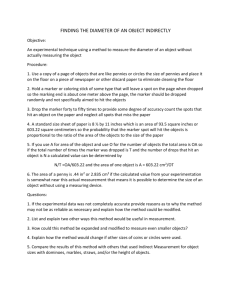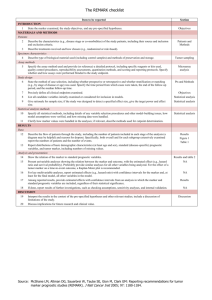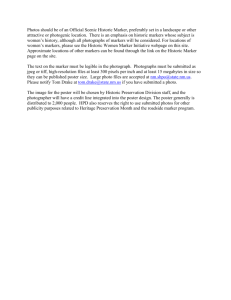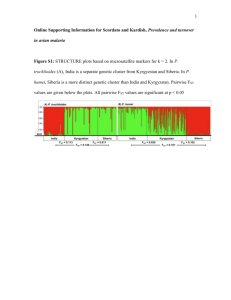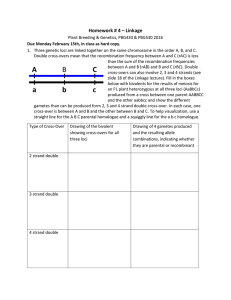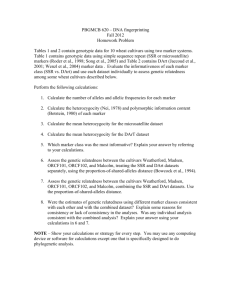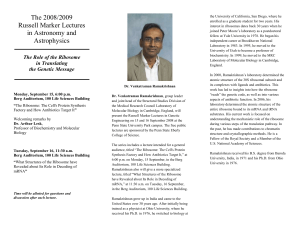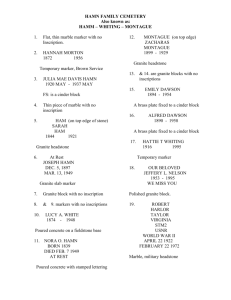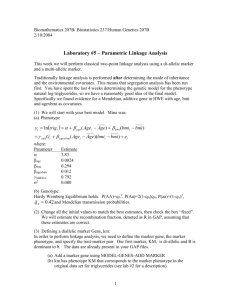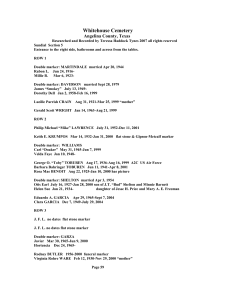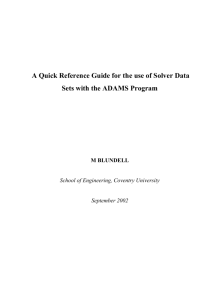Assignment 3
advertisement
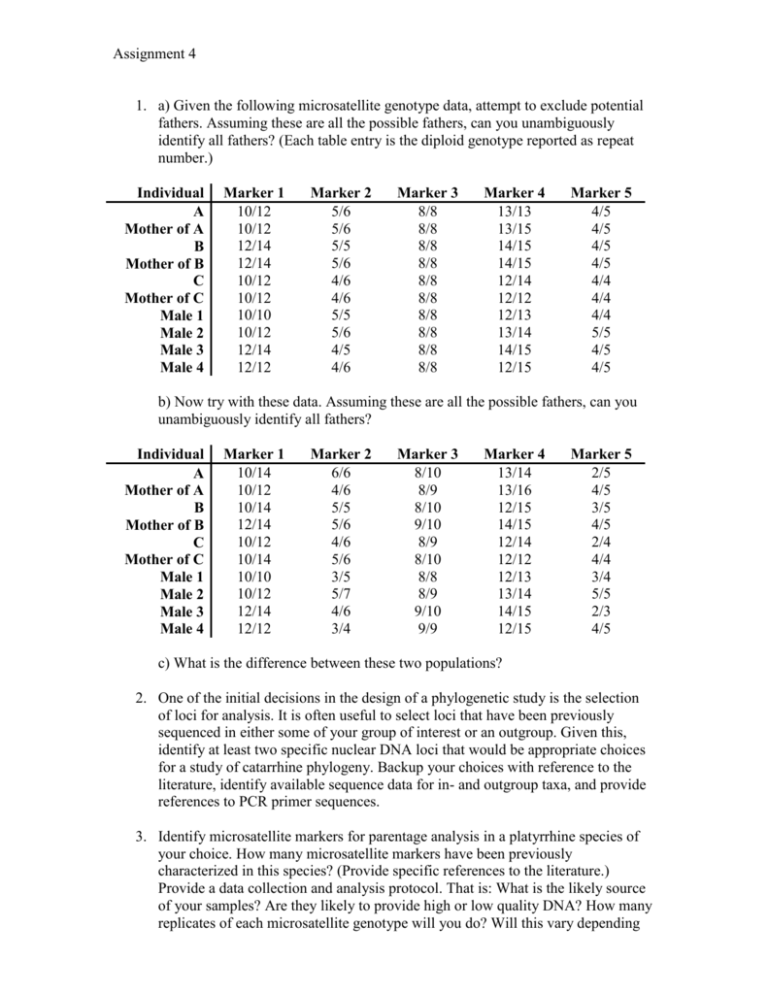
Assignment 4 1. a) Given the following microsatellite genotype data, attempt to exclude potential fathers. Assuming these are all the possible fathers, can you unambiguously identify all fathers? (Each table entry is the diploid genotype reported as repeat number.) Individual A Mother of A B Mother of B C Mother of C Male 1 Male 2 Male 3 Male 4 Marker 1 10/12 10/12 12/14 12/14 10/12 10/12 10/10 10/12 12/14 12/12 Marker 2 5/6 5/6 5/5 5/6 4/6 4/6 5/5 5/6 4/5 4/6 Marker 3 8/8 8/8 8/8 8/8 8/8 8/8 8/8 8/8 8/8 8/8 Marker 4 13/13 13/15 14/15 14/15 12/14 12/12 12/13 13/14 14/15 12/15 Marker 5 4/5 4/5 4/5 4/5 4/4 4/4 4/4 5/5 4/5 4/5 b) Now try with these data. Assuming these are all the possible fathers, can you unambiguously identify all fathers? Individual A Mother of A B Mother of B C Mother of C Male 1 Male 2 Male 3 Male 4 Marker 1 10/14 10/12 10/14 12/14 10/12 10/14 10/10 10/12 12/14 12/12 Marker 2 6/6 4/6 5/5 5/6 4/6 5/6 3/5 5/7 4/6 3/4 Marker 3 8/10 8/9 8/10 9/10 8/9 8/10 8/8 8/9 9/10 9/9 Marker 4 13/14 13/16 12/15 14/15 12/14 12/12 12/13 13/14 14/15 12/15 Marker 5 2/5 4/5 3/5 4/5 2/4 4/4 3/4 5/5 2/3 4/5 c) What is the difference between these two populations? 2. One of the initial decisions in the design of a phylogenetic study is the selection of loci for analysis. It is often useful to select loci that have been previously sequenced in either some of your group of interest or an outgroup. Given this, identify at least two specific nuclear DNA loci that would be appropriate choices for a study of catarrhine phylogeny. Backup your choices with reference to the literature, identify available sequence data for in- and outgroup taxa, and provide references to PCR primer sequences. 3. Identify microsatellite markers for parentage analysis in a platyrrhine species of your choice. How many microsatellite markers have been previously characterized in this species? (Provide specific references to the literature.) Provide a data collection and analysis protocol. That is: What is the likely source of your samples? Are they likely to provide high or low quality DNA? How many replicates of each microsatellite genotype will you do? Will this vary depending on observed genotypes? Will you genotype potential homozygotes more than observed heterozygotes? Why or why not? 4. In the attached text file is a sequence alignment of the mitochondrial COX2 gene in PHYLIP format (cox2.phy). One of the ingroup sequences is not human (other than the chimpanzee) and one is a numt. Which is which? Some tools you might use to determine which is which include BLAST and phylogenetic analysis programs (Phylemon is an online tool; MEGA is a free download for Windows; HYPHY is a free download for Mac and Windows). 5. Mitochondrial and nuclear DNA has been extensively utilized to investigate and understand modern human evolution and migration. However, in some situations human DNA has been unavailable to investigate these questions. Find and discuss a research article that utilizes available non-human DNA as a proxy to human DNA to address and investigative questions dealing with modern human population evolution and/or migration (1-2 pages).
